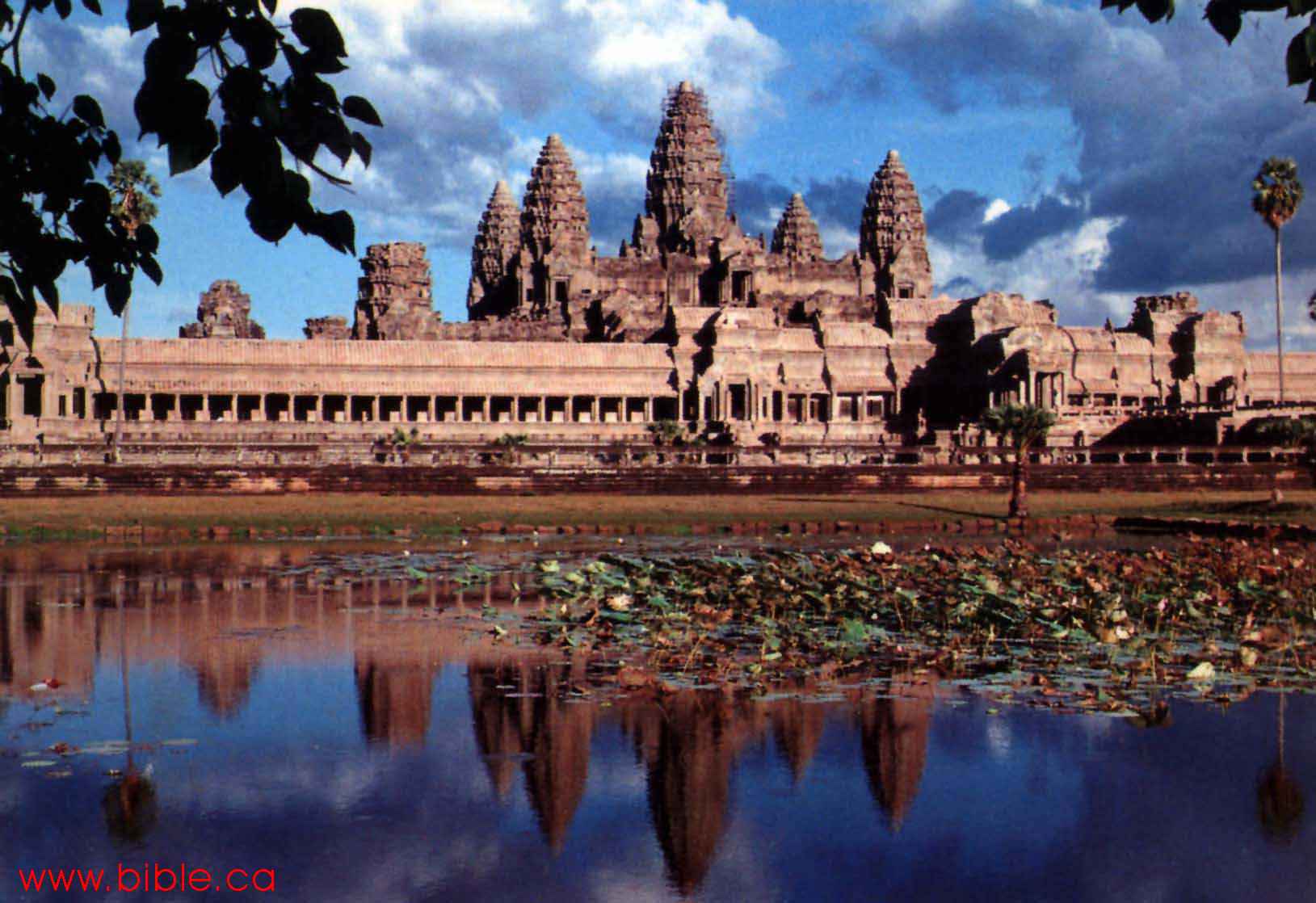
Dinosaurs in ancient Cambodian temple

The magnificent jungle temples of Cambodia were produced by the Khmer civilization, beginning as early as the eighth and extending through the fourteenth century A.D. One of, if not the greatest monarchs and monument builders of this empire was Jayavarman VII, crowned supreme king in 1181. Portrait statues, depicting him meditating in the fashion of Buddha, have been found throughout the region.
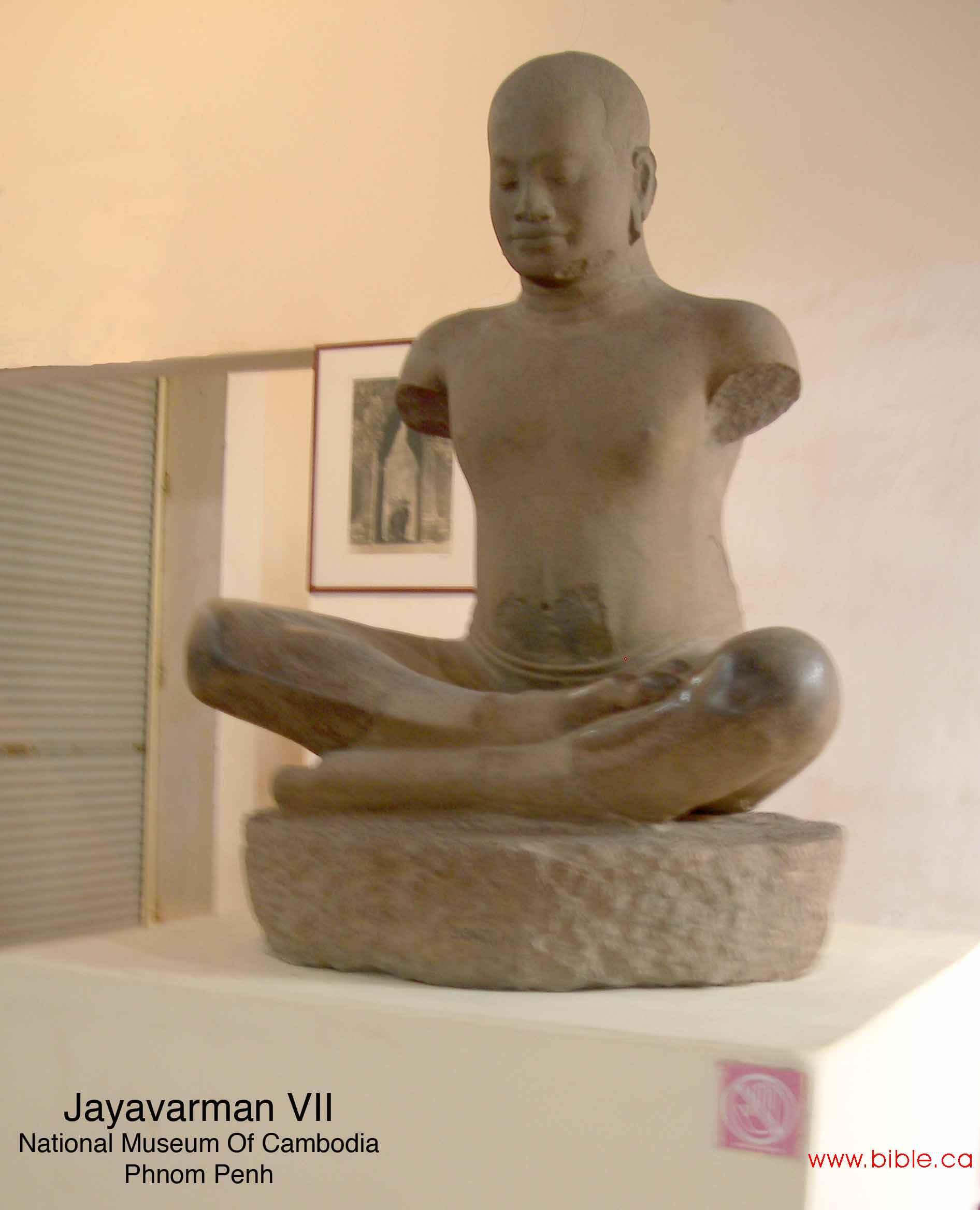
An excellent example can be seen in the National Museum Of Cambodia in Phnom Pehn. He built the beautiful temple monastery Ta Prohm in honor of his mother, dedicating it in 1186.
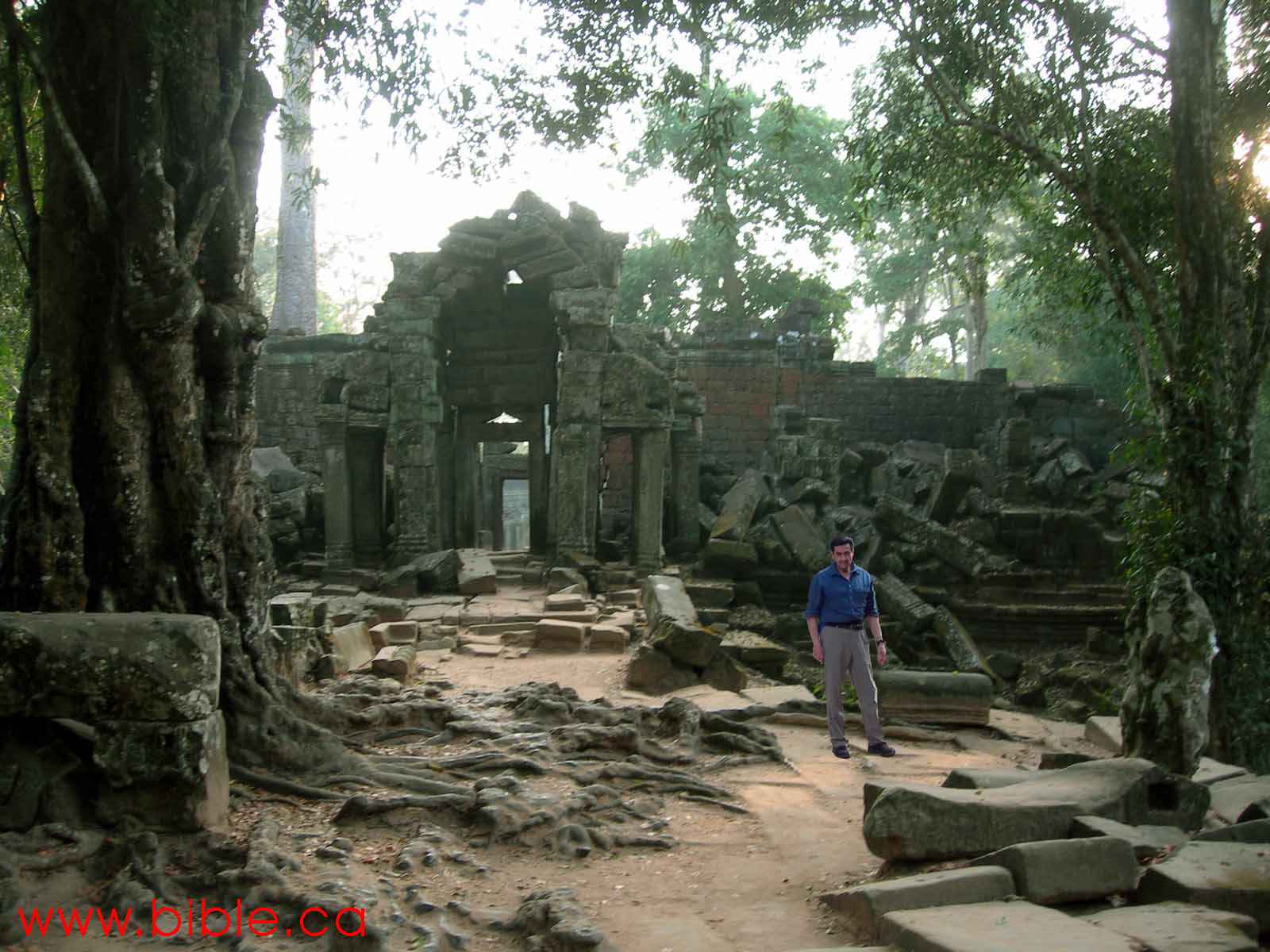

These awesome temples were rediscovered by Portuguese adventurers and Catholic missionaries in the 16th century and many were restored in 19th and 20th centuries. Ta Prohm, one of the most picturesque, was left in it's natural state. It recently gained international attention as the setting for the first Laura Croft movie.
At the corner formed by the elaborate front entrance and the front wall is a ten-foot column covered with these decorative circles.
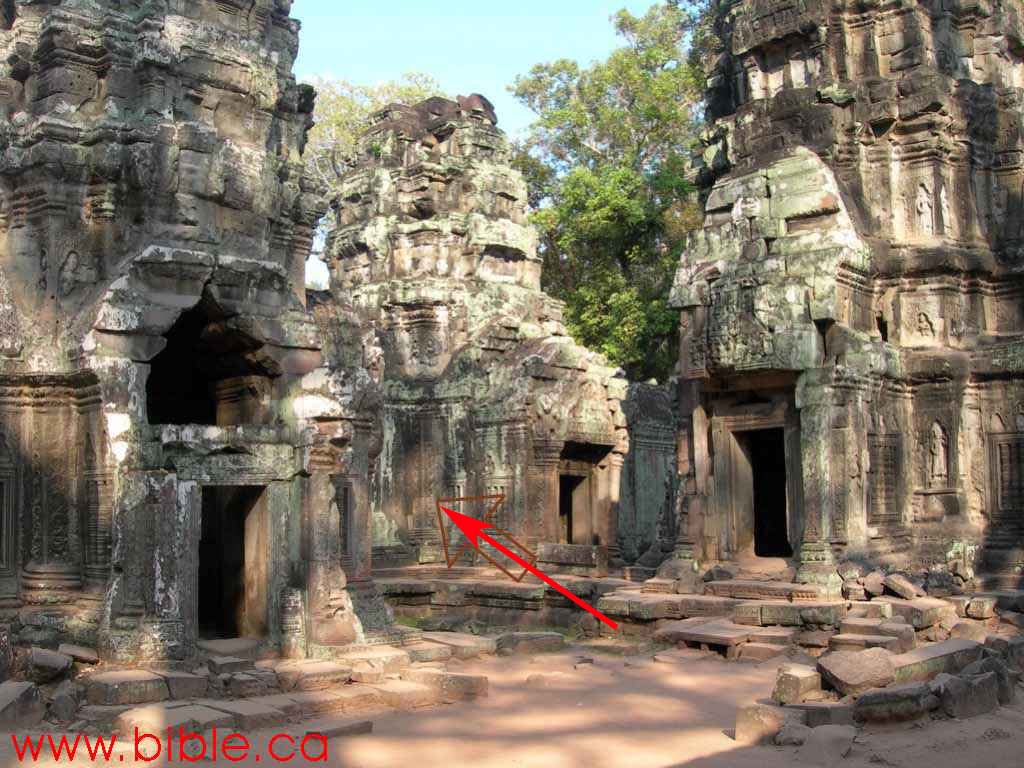

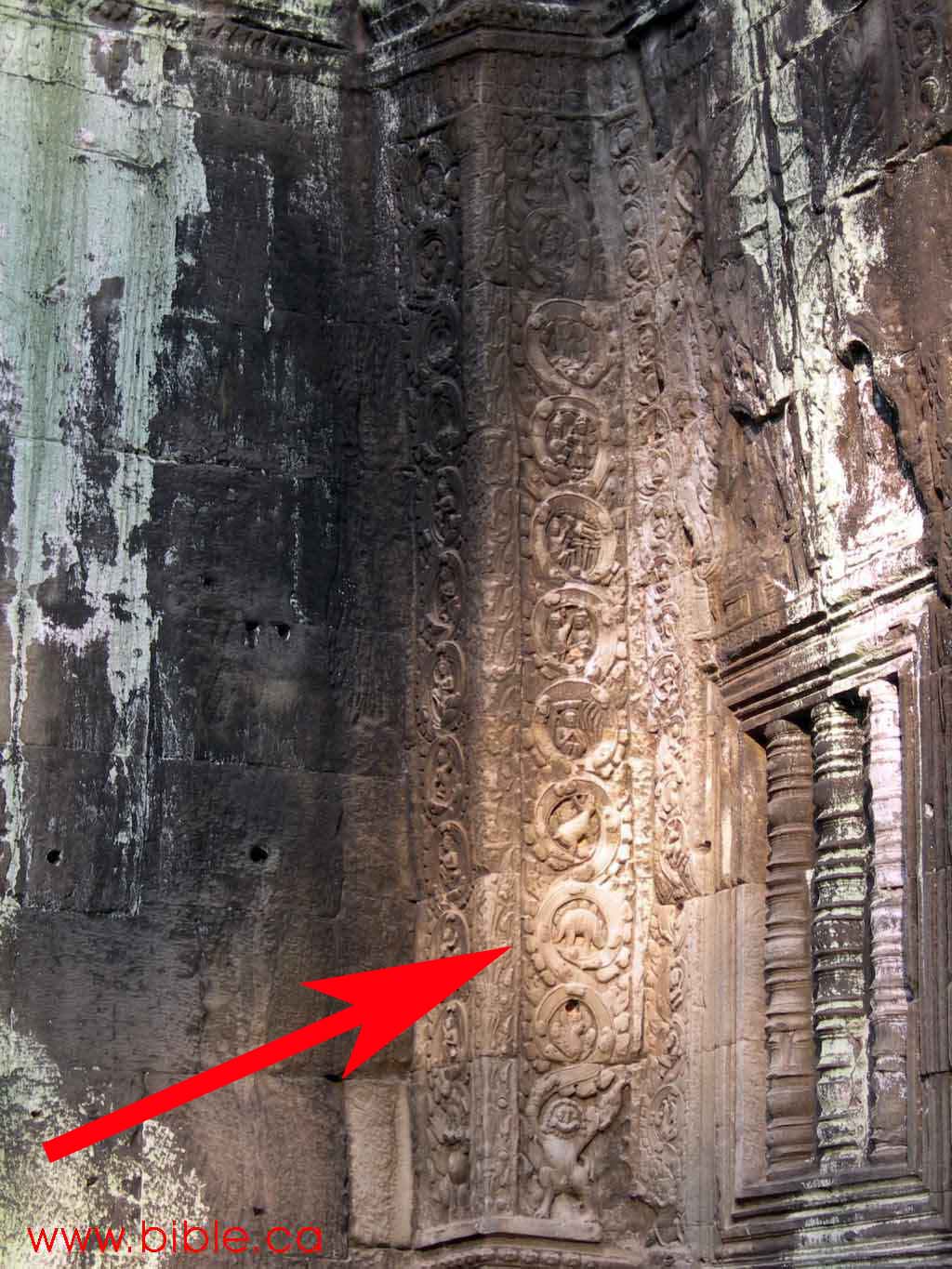
One of the animals enclosed in these circles is a stegosaurus.
(Click on photo below for high resolution)
Ta Prohm abounds with stone statues and reliefs. Almost every square inch of the gray sandstone is covered with ornate carvings. Hundreds of decorative stone circles surround familiar animals, such as monkeys, deer, water buffalo, parrots.
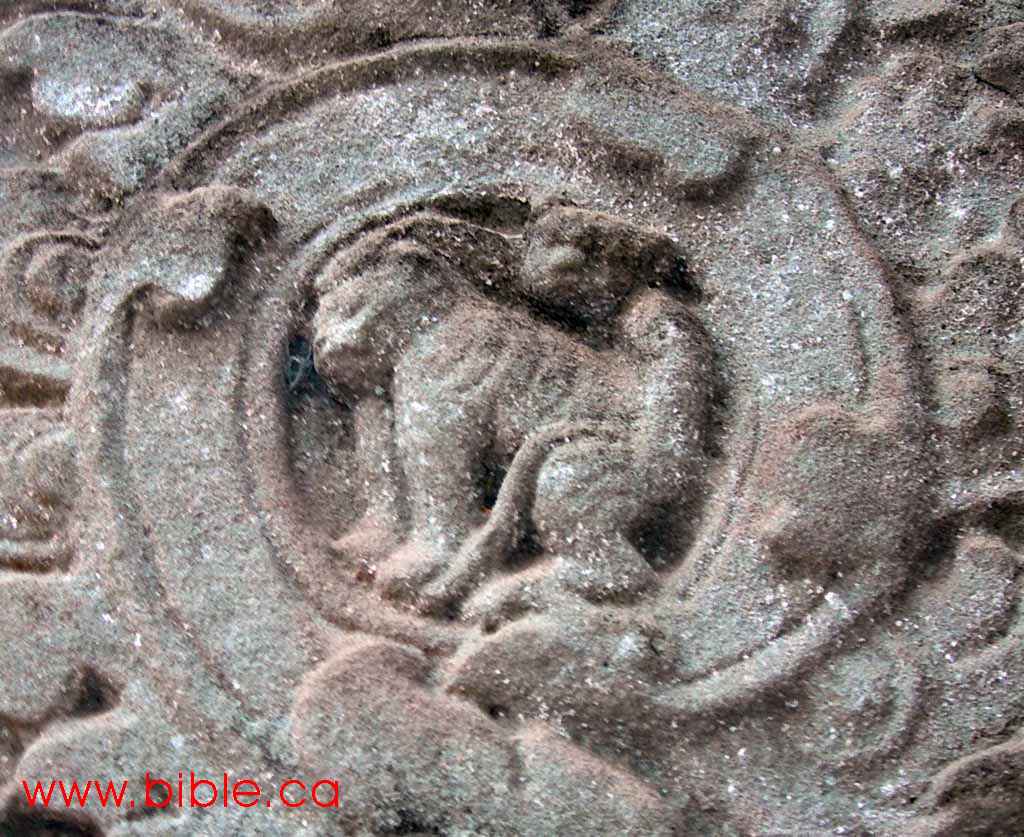

(monkey upper left, deer upper right)


(water buffalo upper left, two parrots upper right)
|
|
Here are two examples of swans left and above. |
When they intended to portray lizards, they did so beautifully.

The obvious indication is that the stone carvers of the tenth century saw a stegosaurus as they saw monkeys, buffalo and deer.
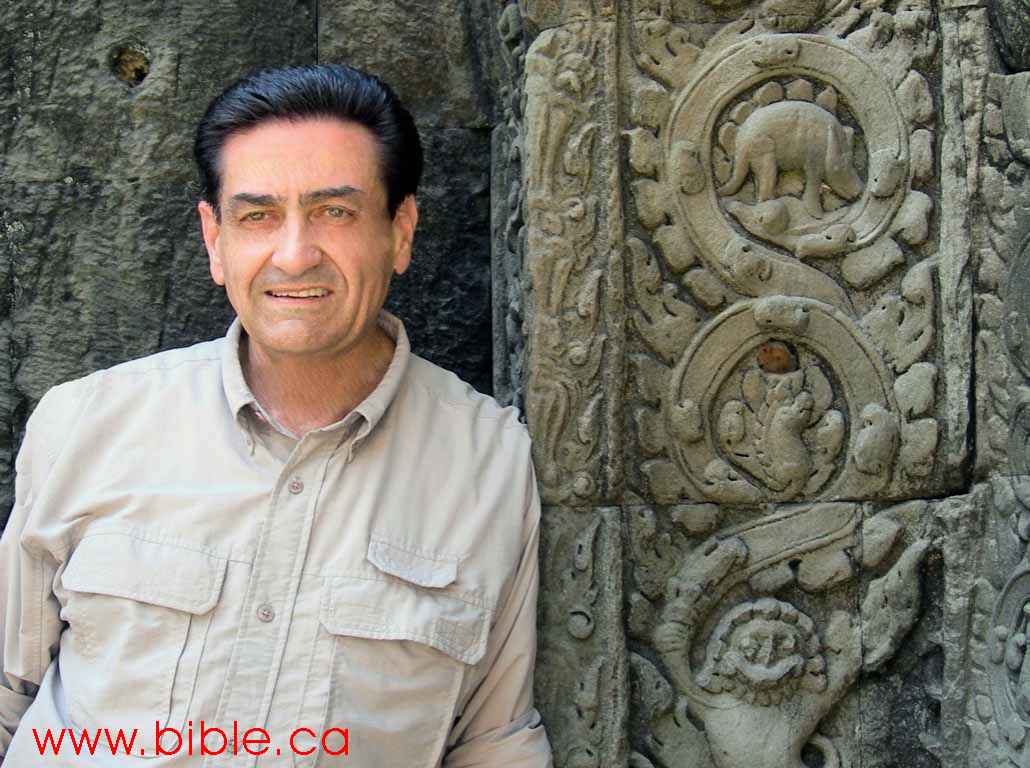
Below
: The area of the stegosaur appears lighter (especially the raised portions) because it was cleaned by the famous photographer described below. Nevertheless, the "patina" is still obvious in the recesses (Note under the tail, under the chin, in front of both legs, on top of the "ground" between the legs, above and between the plates on the back).(
Click on photo below for high resolution)

The area around the Hindu god Indra (
below) seems to have been cleaned in a similar manner.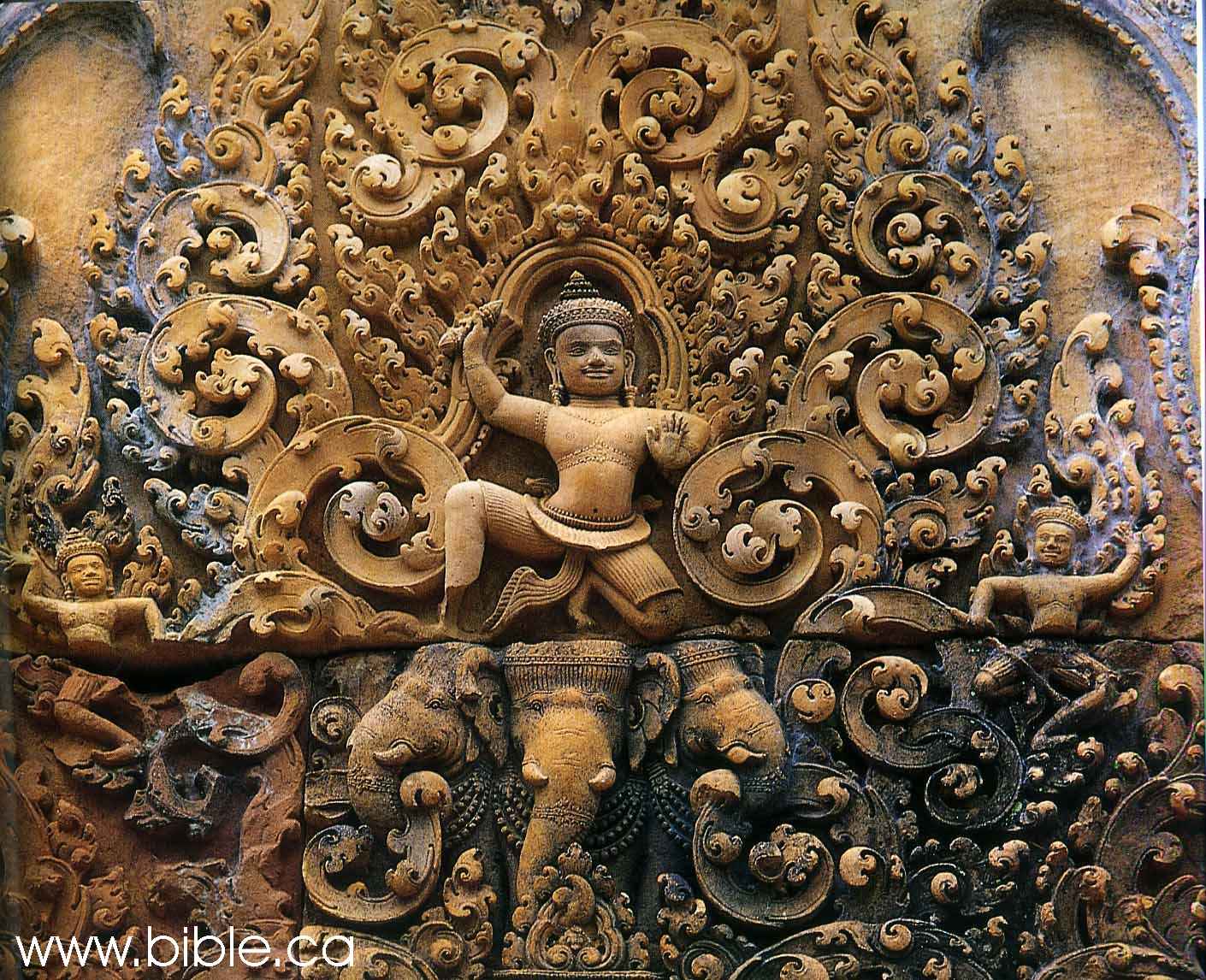
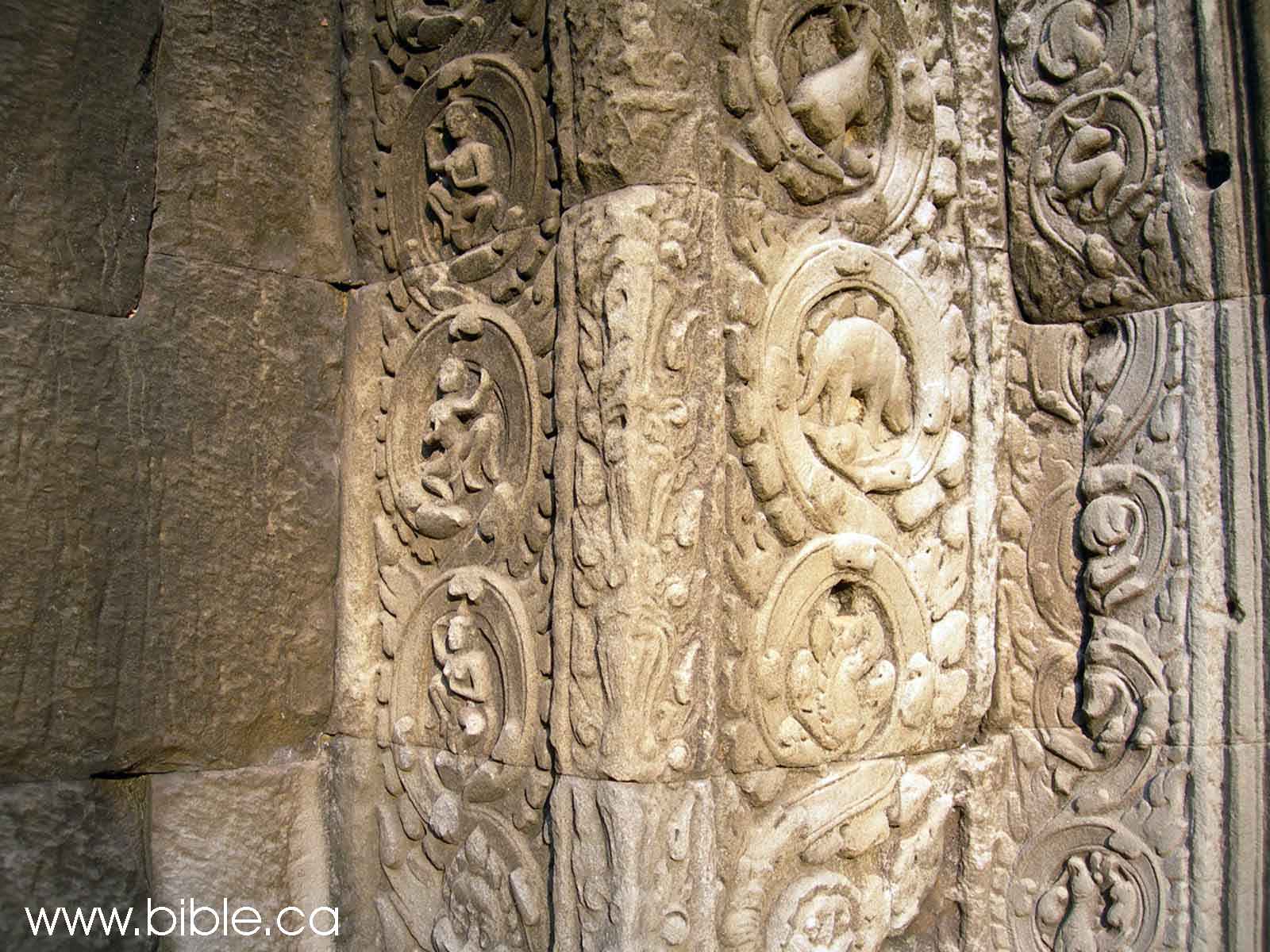
The idea that the carving may have been added recently is simply not possible for at least a half-dozen reasons.

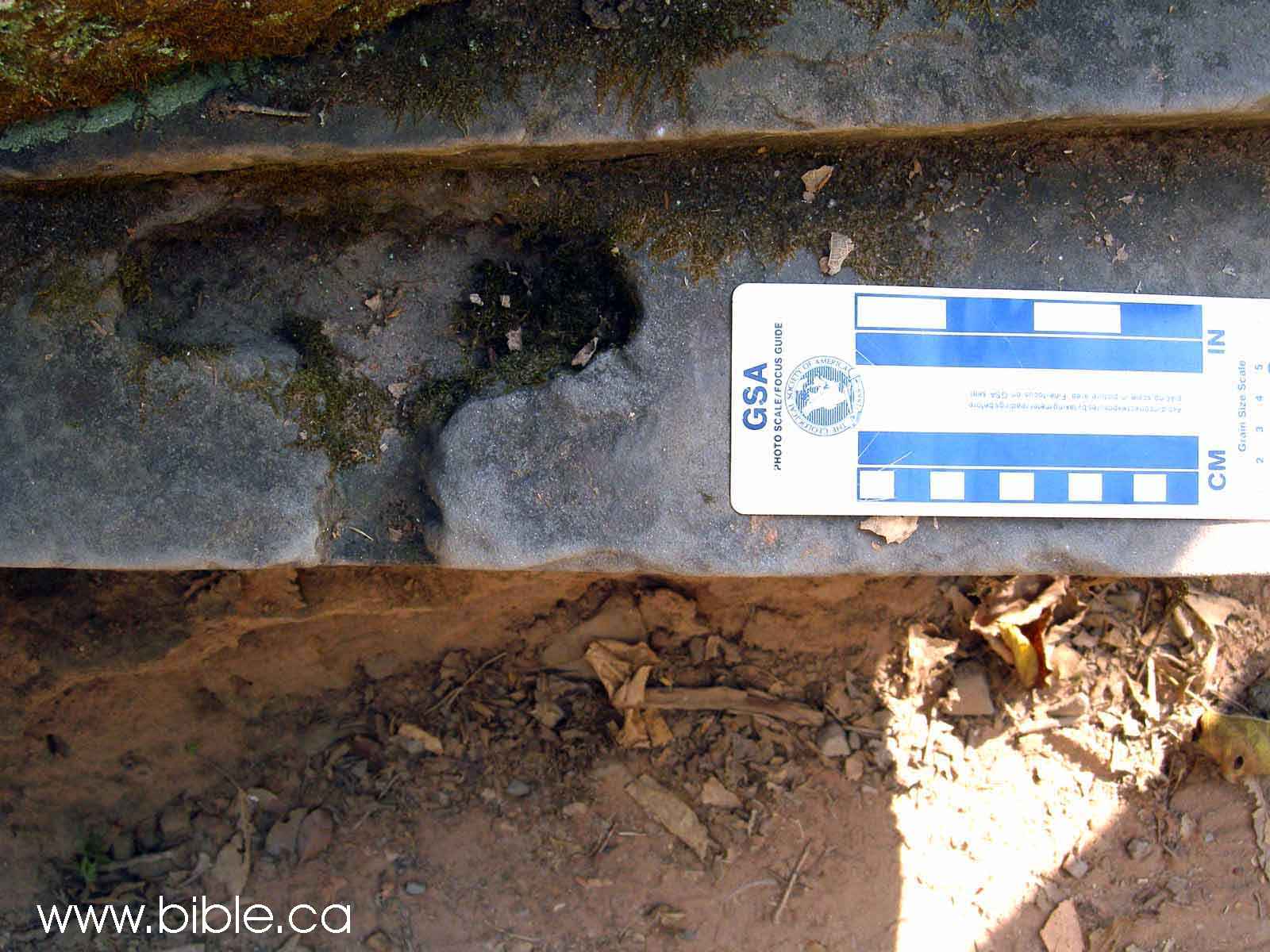
An interesting sidelight is that I observed and photographed this method of construction in Tiahuanaco, near Lake Titicaca in Bolivia. (see below) Bolivia is around the world from Cambodia, yet the staples appear to be identical.
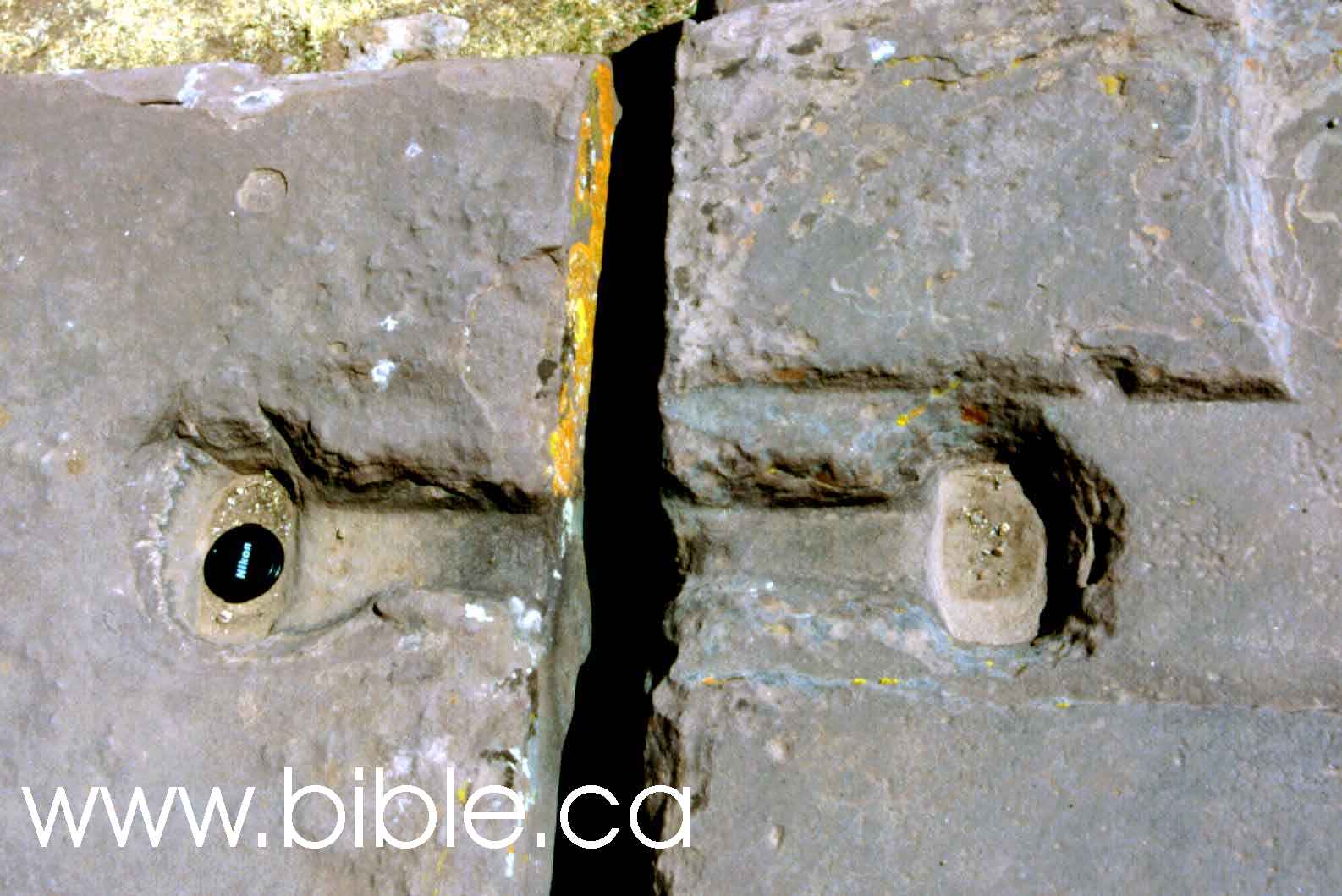

However, the point that we are making here is that the blocks are interlocked in such a way that removing and replacing a block with 40 feet of overburden without detection, is an imaginary idea that will not work.
5. It may sound presumptuous, but I am trained in petrology. I know rocks. If someone had altered this rock, years after the original carvings, I would see it immediately. It would also be obvious to other experts who have carefully examined this carving (documented below). I can tell you without the slightest doubt, this carving is not modern, it is contemporary with the other carvings of Ta Prohm.
6. It should also be mentioned that the mind-set in Cambodia is very different form ours. The people are still greatly intimidated by governmental authorities. The brutal execution millions for almost any excuse, is vivid in the memory of virtually all adults in this country. Some of the same government officials responsible for the slaughter of perhaps 1/4 of the population are still in power today in this communist dictatorship. Consider this in connection of the fact that dozens of federal police with AK 47's patrol the ruins day and night, daring anyone to deface or take "souvenirs." It is simply not credible to imagine pranksters, defacing and re-carving these "sacred" temples, which are still actively used today for Hindu and Buddhist idol worship.
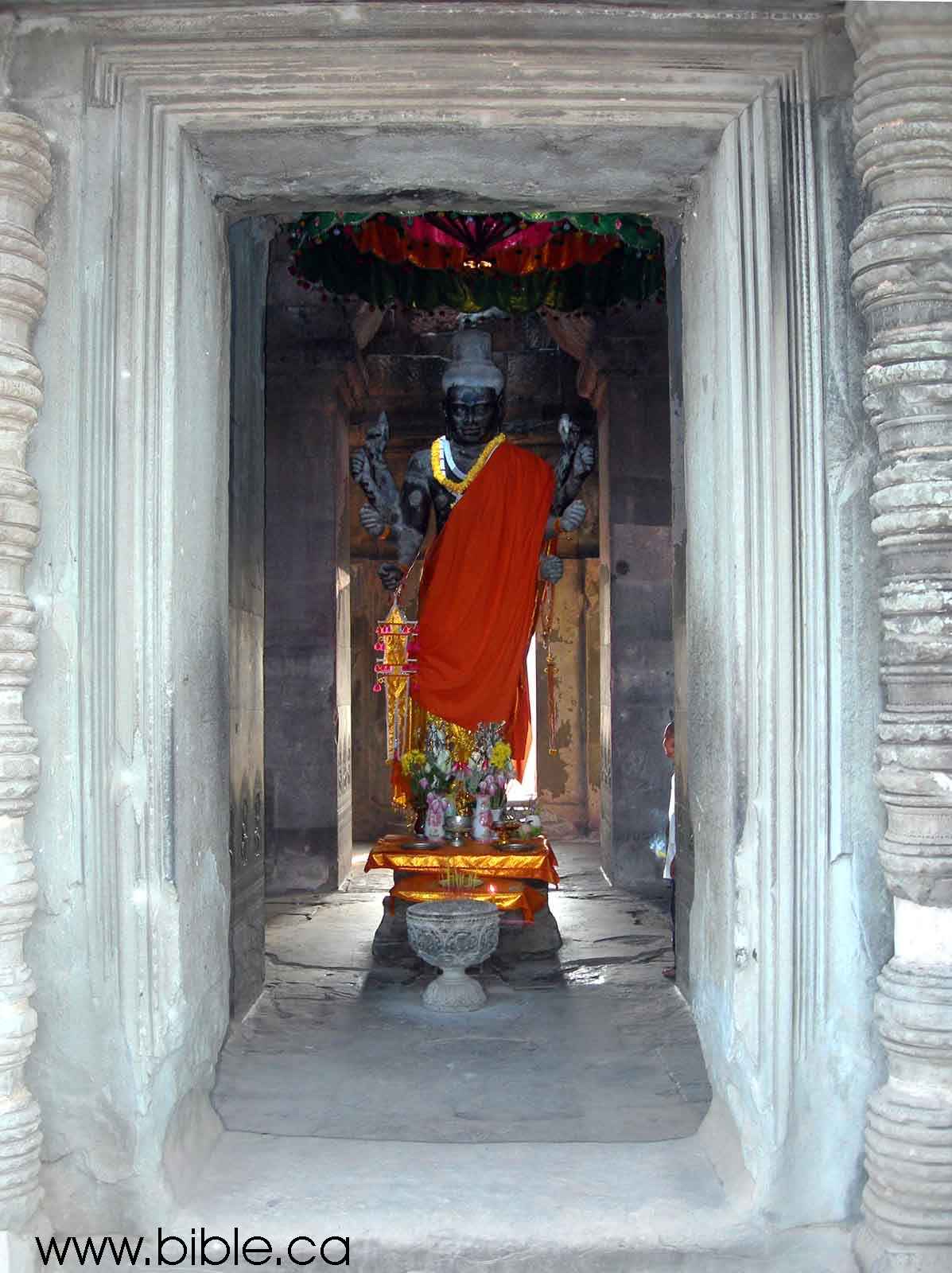
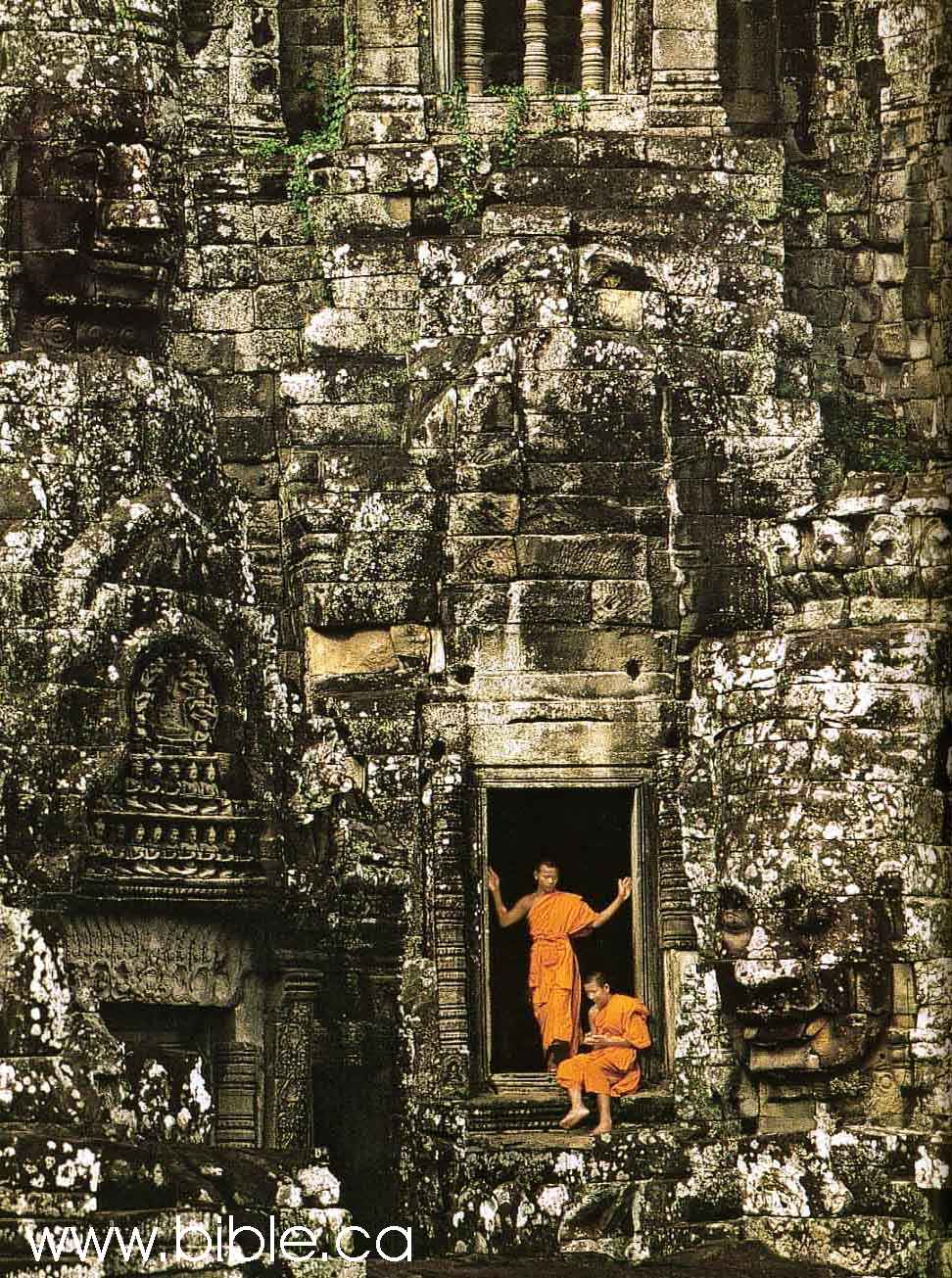
(
Click on photo below for high resolution)|
At least two very significant books testify to the authenticity of the stegosaurs carving. Ancient Angkor was first published in Thailand in 1999 by River Books Ltd., Bangkok. A small picture of the carving is seen at the bottom of page 143. On page 144 we read, " Along the vertical strip of roundels in the angle between the south wall of the porch and the east wall of the main body of the gopura there is even a very convincing representation of a stegosaur." |
|
|
|
|
The large, beautiful 320 page book, Angkor, Cities And Temples, by the same author and photographer, includes a half page picture of the stegosaur sculpture. On page 213 the author describes it as " an animal which bears a striking resemblance to a stegosaurus". |
|
The book cover describes the qualifications of the author and photographer.
"Author: Claude Jacques, a long standing member of the Ecole Francaise d'Extreme Orient, lived in Cambodia for nine years where he taught Khmer history at the Archeology Department of Phnom Penh. Throughout this period he also pursued his research which frequently took him to Angkor and its surrounding cities. He has been the director of studies at Ecole Pratiques des Hautes Etudes for the last twenty years, teaching the history of Southeast Asia. He is an expert in Sanskrit, Khmer and Cham scripts and is closely involved in the various restoration projects being undertaken at Angkor." (Angkor, Cities And Temples, Book cover)
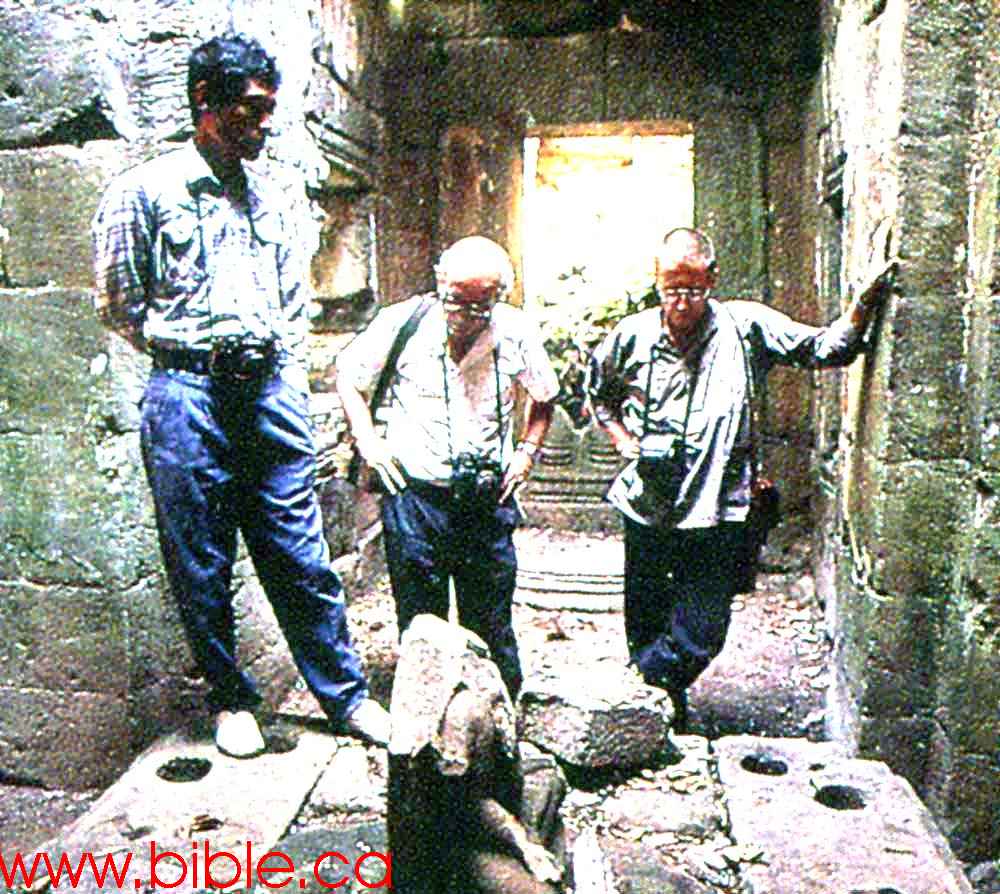
This book has a Forward written by the director of UNESCO who says:
"There are excellent reasons for Claude Jacques to have written this new book on Angkor. Following the 'solemn appeal' which I made in November 1991, and the 'Tokyo Declaration' of October 1993, a co-ordinated internation effort has been set up to safeguard and develop Angkor. Despite the huge challenge, the formidable obstacles and the many perils, all concerned have regained their confidence and hope. Four years of determined effort have been rewarded with remarkable success ..." (Federico Mayor Director General, UNESCO Paris, 1997)
The book cover also describes the photographer:
|
|
"Michael Freeman's photographs have been published in leading magazines such as GEO, The Sunday Times Magazine, the Smithsonian, and Life. He has also worked on numerous books including Ancient Capitals of Thailand and Palaces of the Gods: Khmer Art and Architecture in Thailand. He has specialized in photographing Southeast Asia for more than a decade." The book cover of, Ancient Angkor, adds, "He was the first photographer to have prolonged access to Angkor after the country's two decades of war, genocide and civil war." |
Let's Do Some Science
A few skeptics have based their objections on anatomical differences between popular Stegosaurus restorations and the Cambodian sculpture. The fact that the average Jr. High student immediately identifies the sculpture as a Stegosaurus is considered of no consequence. "The head is too large Stegosaurs had no horns or frills on the head" The sculpture has no spikes on the tail... Therefore, they conclude that the sculptor never saw a Stegosaurus.
One is tempted to respond to these claims by pointing out that our modern restorations involve some guess work, that Stegosaurs may have exhibited a significant amount of anatomical variety (like dogs), that a view of tail spikes may well be blocked by the surrounding stone circle, etc., etc. However, this line of reasoning focuses the discussion on the wrong issue. The relevant question is not, Can you find anatomical differences with today's popular restorations? Rather, the real question is, What kind of sculpture would be produced by an artist who remembered seeing a Stegosaurus?
Consider the following brave observation regarding this sculpture by an author unknown to me, posted to a web site dominated by skeptics.
"As an artist myself, I find it amusing that skeptics are picking at the anatomical incorrectness of this rendering. If I were going to draw a stegosaurus from memory, that's what it would look like, by gum. And of COURSE it was done with a chisel. Just like the rest of the wall. Sheesh. Most artists have handwriting,' and this artistic style matches the rest of the pictures, as well. Isn't the triceratops head frill a neat addition? It's actually more convincing to me than if it HAD been a perfect replica. Says that there was some confusion there. Combined legends? Conflicting sightings? Cool."
Assuming the sculptor did not have a Stegosaurus trained to pose as a model, and there was no access to the internet, the rendering would most likely be from memory. Would the results of this process necessarily be anatomically correct compared to today's restorations? What would it look like?
Instead of relying on wide ranging, presumption serving speculation, I determined to answer the question by means of an experiment. I persuaded an art instructor at the University of Texas at Arlington to assign an art class (Communication Graphics) the task of drawing a Stegosaurus, from memory. These college students were not paleontologist nor were they professional artists. They were students studying art. The analogy is not perfect but the experiment should provide insight into our question, "What would an artist produce from memory?"
There were 36 students in the class. The following 12 drawing are the best of the lot. I think you will agree with the instructor's assessment that none of the students' efforts looked as good as the sculpture on the temple wall in Cambodia.


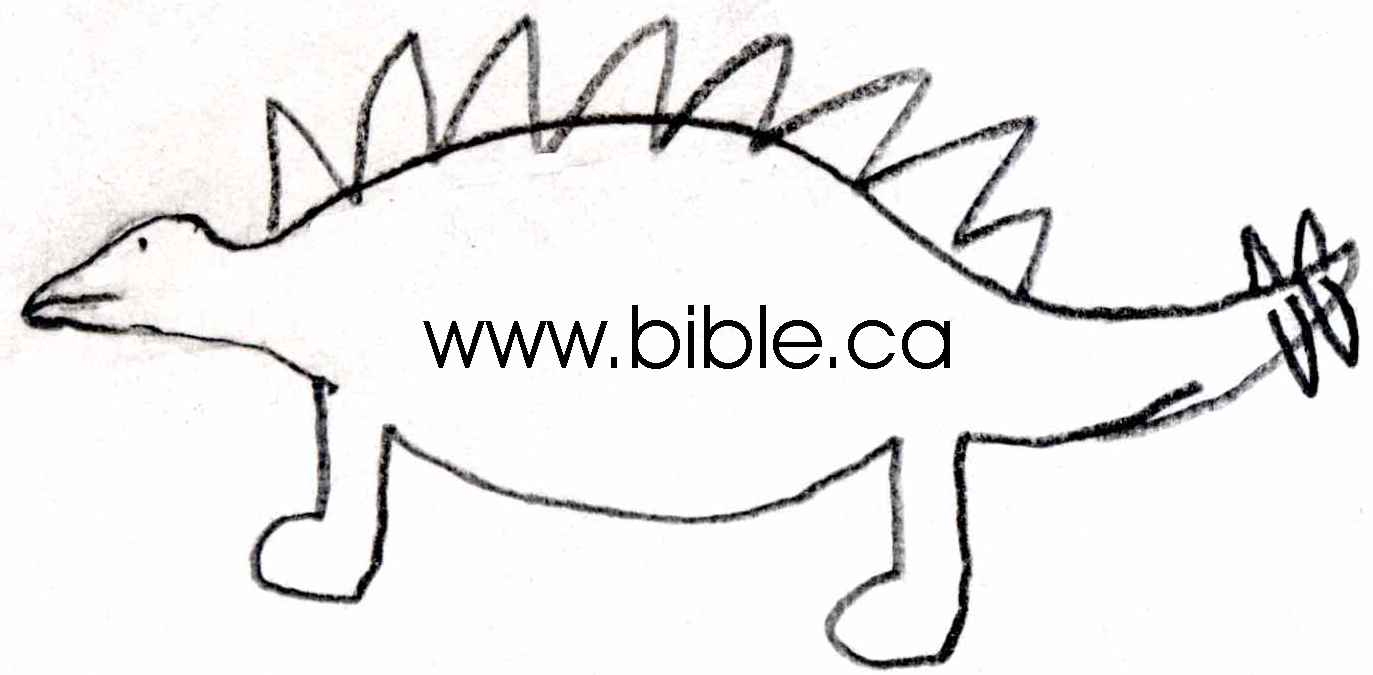


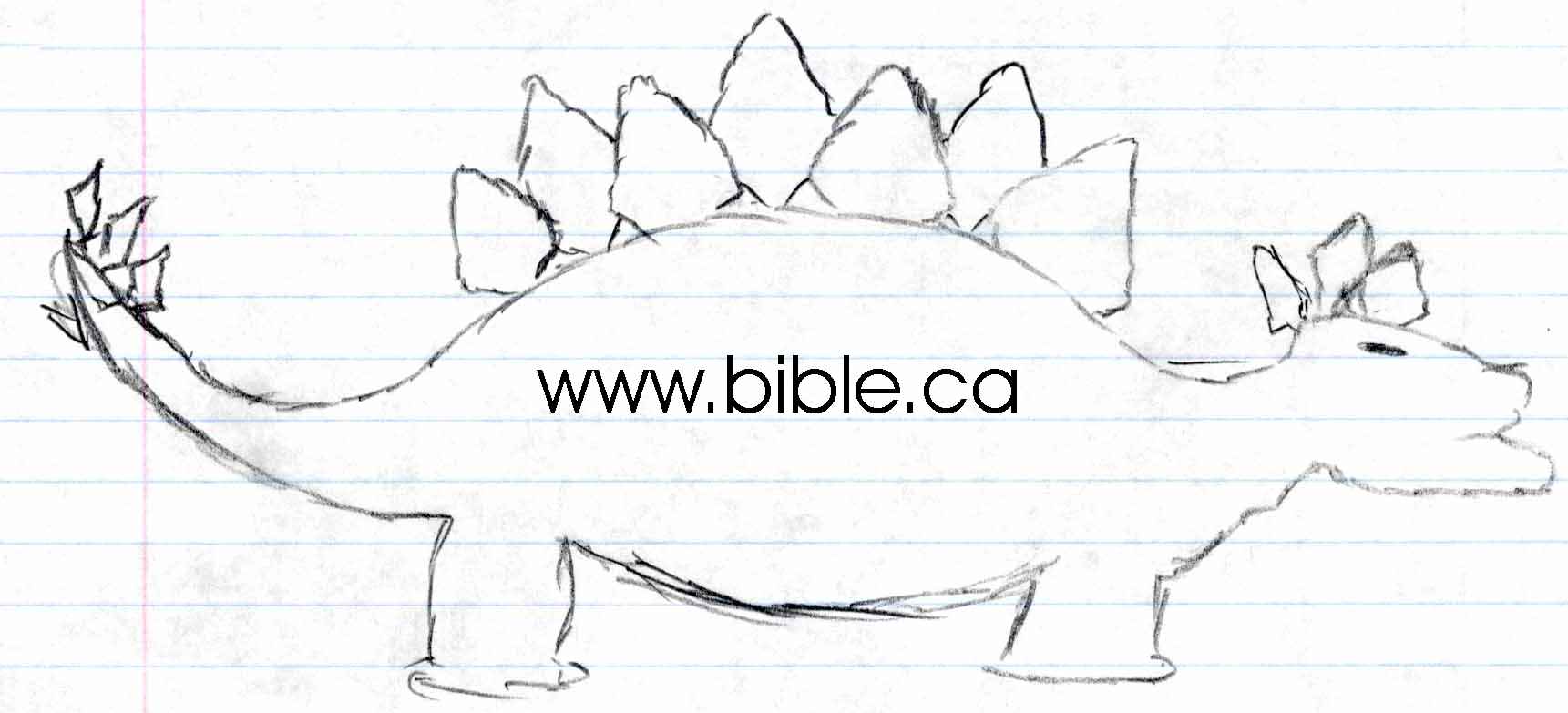

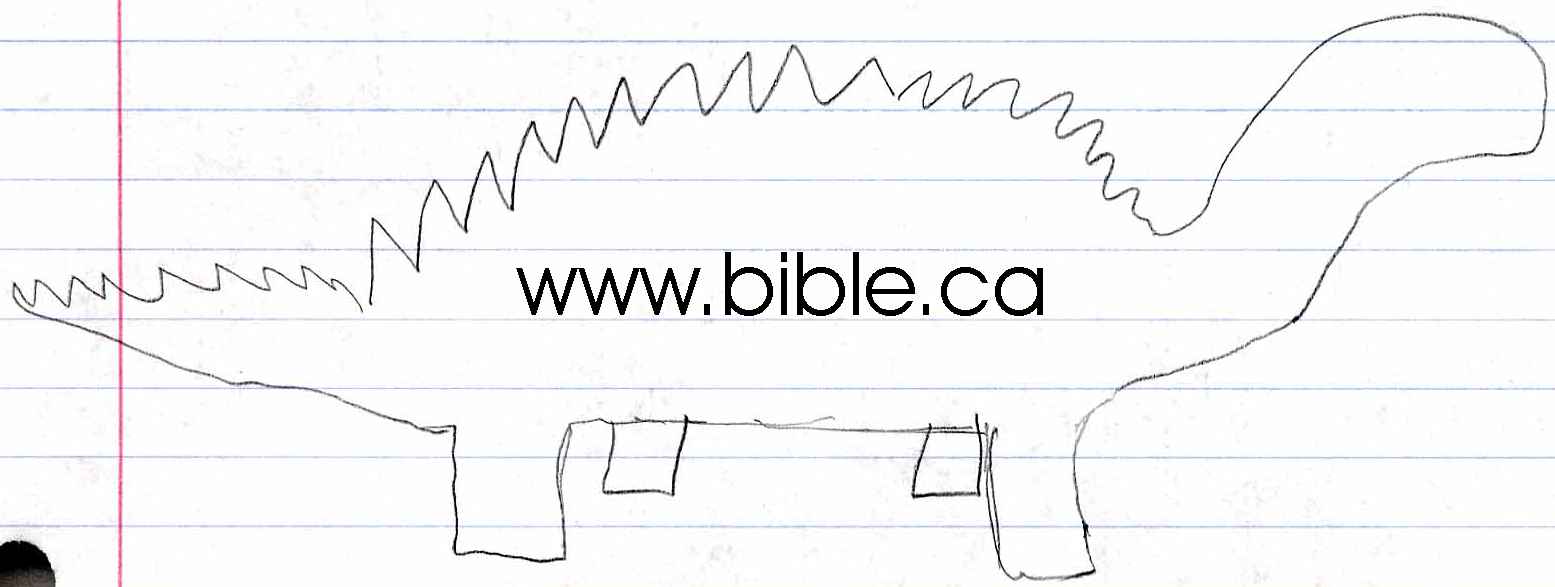
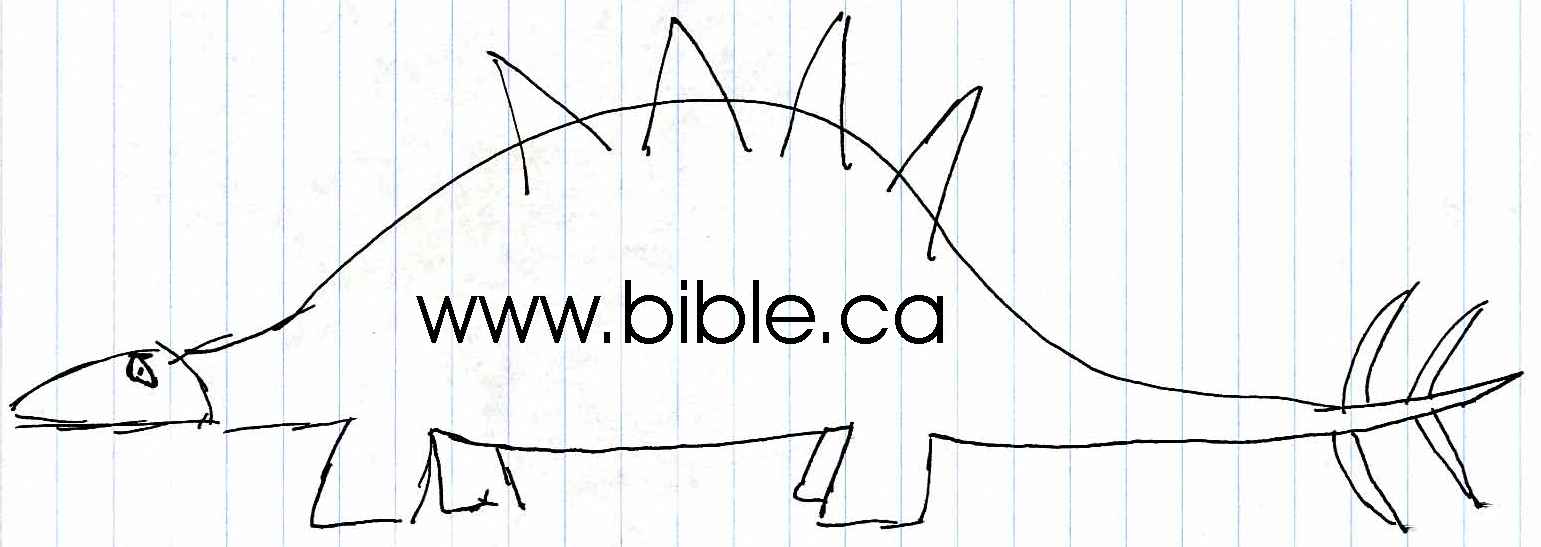

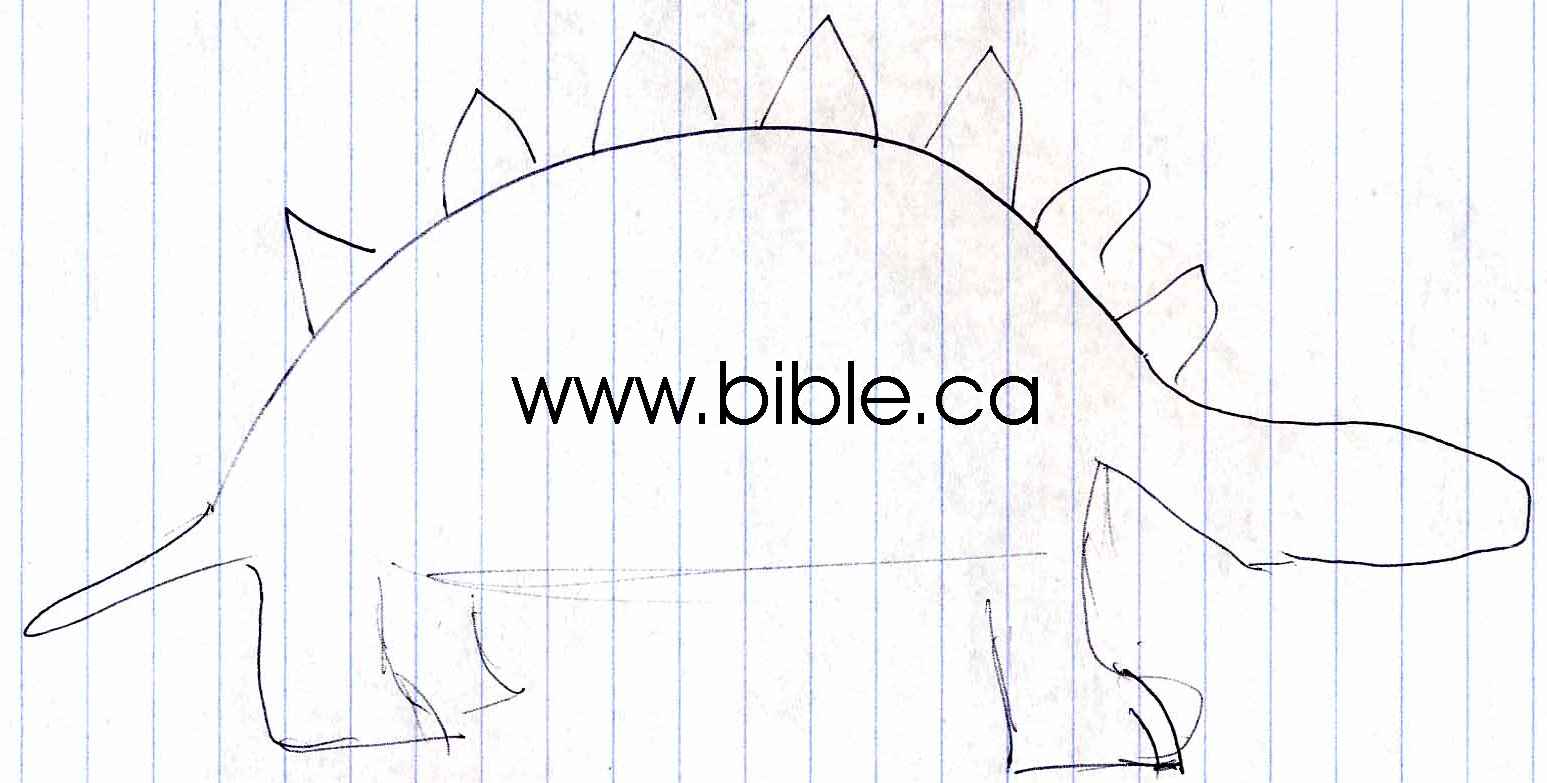
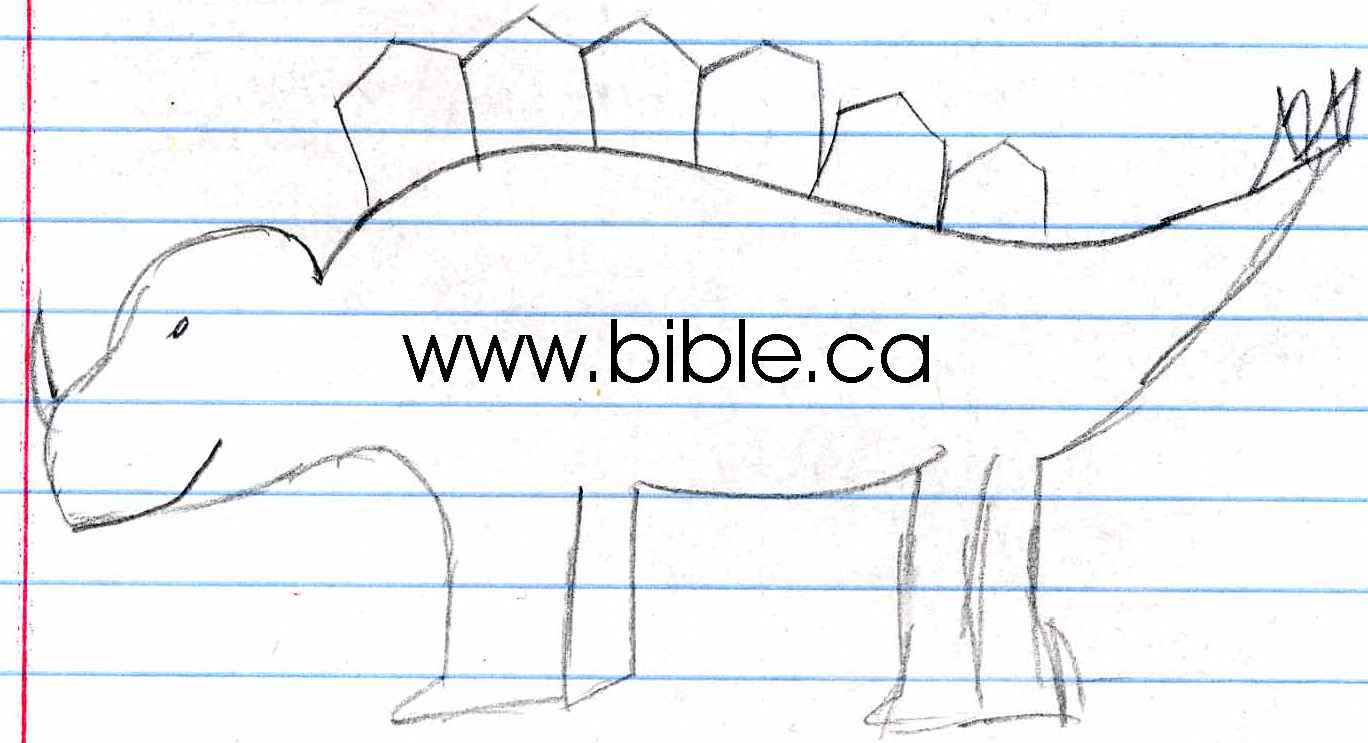
I was struck by the similarity between the Cambodian Stegosaurus and a picture frame I have used for years to display a picture of my niece.

It's not a perfect representation but then it is not intended to be. Tail spikes would not fit the style. Terms like stylized and artistic license are familiar because we all know that artists do that. Some of the animals at Ta Prohm are very realistic but some are not. The swan is readily recognizable from Hindu tradition but is somewhat stylized and certainly not anatomically correct.
|
|
Here are four examples of swans left, above and the two below. |
|
|
|
Let's think about the implications of these observations. Does anything other than an anatomically correct portrayal, prove that the artist never saw a good representation of what was being portrayed? Had the artist who produced the swan sculptures never seen a swan? Really now, would that follow? The Stegosaurus drawings of the art students are at least recognizable. Isn't it obvious that they must have seen a picture? How else could one account for the drawings' relative similarity to published restorations as well as to each other? The conclusion that the art students had not seen a Stegosaurus because their pictures are anatomically incorrect, is an obvious non-sequitur. It simply does not follow.
How, then, should we assess the assertion that the Cambodian sculptor never saw a Stegosaurs because his depiction is imperfect (though better than the art students)? The students must have seen a Stegosaurs but the Cambodian sculptor did not??? You think? Prejudice has the power to makes us look awfully ridiculous.
